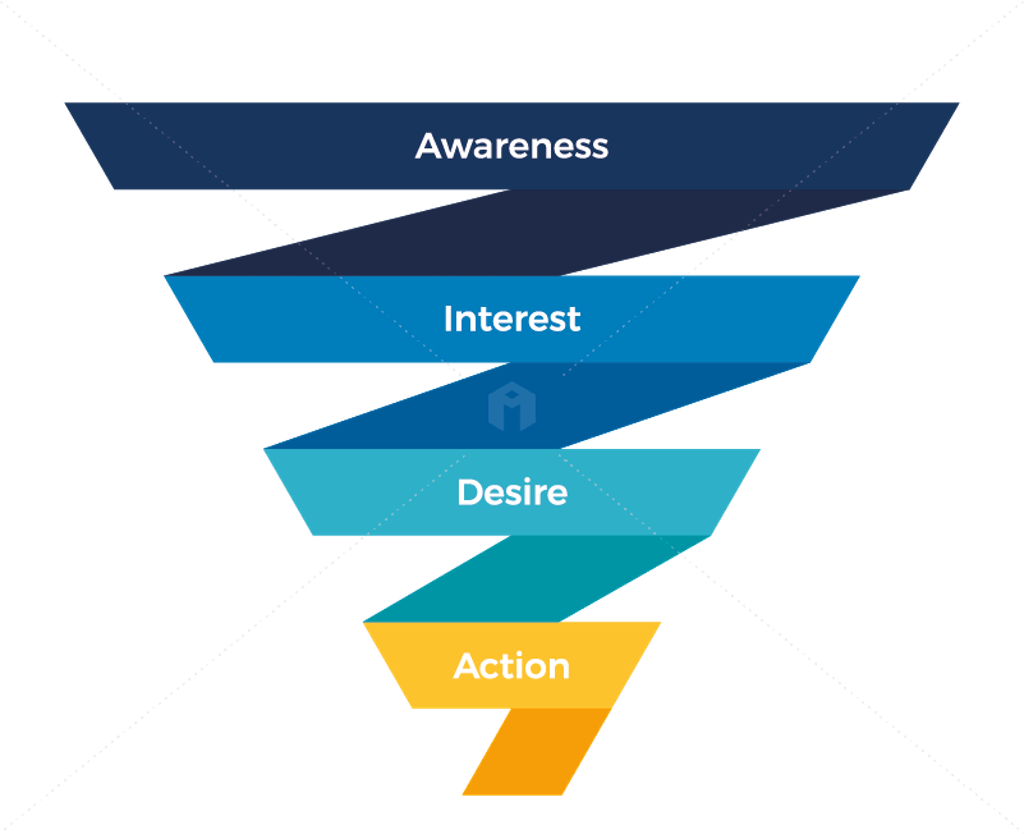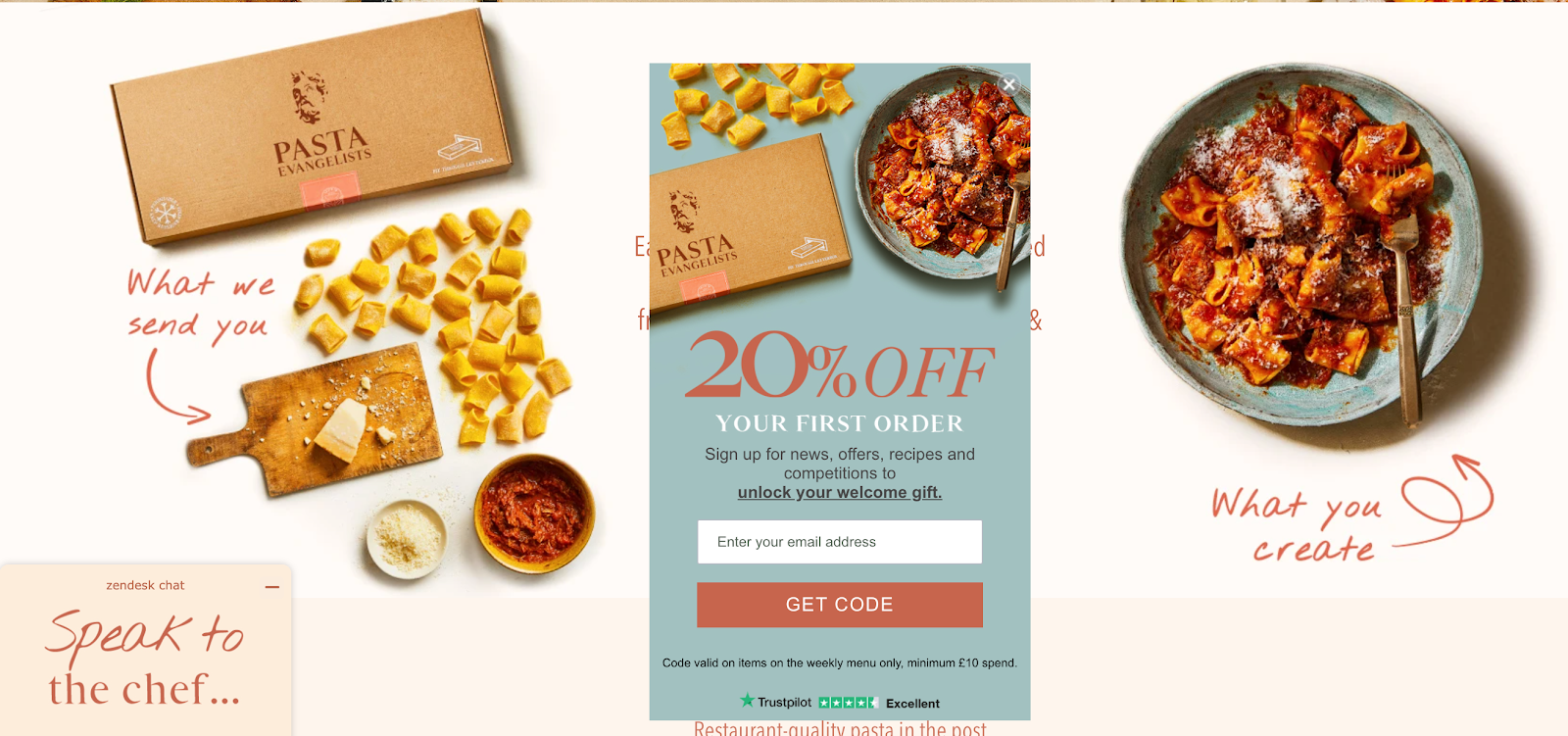In its basic form, push marketing means that you are directly marketing to the customer, by ‘pushing’ your content out to the public. On the other hand, pull marketing focuses on bringing customers to you by pulling them in to your website or social media pages.
There are suitable times to use both strategies and they can also be used together – the key is knowing when to use each one.
In this article, I will explore the differences between ‘push’ and ‘pull’ methods in relation to digital marketing, highlighting examples of how these can be successfully applied to your own strategy.
Push marketing definition
Push marketing defines a strategy where businesses aim to push their products in front of consumers, with the overall aim to gain exposure, highlight unique selling points and ultimately make a sale.
This form of marketing is often attributed to brands that are in their infancy and are trying to build brand image and market share. It also tends to be a common approach within the fast-moving consumer goods (FMCG) arena, generating higher rates of short term sales.
When is push marketing useful?
- When launching a new business or a website that is yet to build a reputation
- When releasing brand new products or moving into a new niche
- For promotional campaigns
- For seasonal sales and events such as Spring Sales, Black Friday and Christmas
- To generate quick sales and increase cash-flow
- To help with brand recognition when competing against a dominant competitor
One of the most popular ways of executing push marketing is through email marketing and paid media (also known as pay-per-click or PPC marketing). Paid media can include; sponsored posts on social media, pop-ups, display ads, paid search results, video ads and other forms of promoted multimedia.
Paid media can be a fruitful way of expanding your brand reach, getting more clicks, and generating more traffic.
Push marketing example in action
PlugHugs has created some earplugs and wants to get this product seen by as many people within their target audience as possible, in order to make a large quantity of sales.
The unique selling point (USP) of the earplugs is that they are 70% less likely to fall out during sleep and also cancel out more noise than any other earplugs on the market.
PlugHugs knows that their target audience is predominantly males aged between 25-60 and decide to invest in paid media advertising to create awareness of the product, its USP and how the earplugs can help solve the customers’ problem.
By using paid ads on Facebook, the team is able to target users by age, demographic, location, socio-economic status, and interests. Their ad will then appear in a potential customer’s newsfeed, with the objective of pushing them to PlugHug’s website to make a purchase.
Pull marketing definition
On the other hand, pull marketing (or inbound marketing) is focused on offering quality content such as blog posts, articles or videos that a potential customer can access in their own time. The aim with pull marketing is to pull the customer in with an enticing, attractive and helpful offering.
Creating content that encourages a user to click and learn more can help with exposing the user to the brand that has published the content.
When is pull marketing useful?
- When the customer already has an idea of what they are looking for
- To help maintain dominance in a specific industry
- When a customer needs to do more research on a product or service
- When trying to move the customers to the next stage in the conversion journey
Customers with specific needs will more than likely start their search for a solution using search engines, which is why using SEO tactics is vital to the success of a pull strategy. Customers who are using search engines to find out the options available to them, are already prepared and ready to take the next steps towards conversion.
Overall, pull marketing is far less interruptive than push marketing and tends to build brand loyalty more effectively. In addition, when users are already interested in a topic, they are more likely to learn faster and retain more information, particularly if the content they are consuming is enjoyable to read or to view.
Pull marketing example in action
Penny heads up a business called Learning with Penny where she sells online courses to SMEs. She wants to pull in business owners/managers so that they choose to buy her services over any of her competitors. She already has a large following on her LinkedIn page and has built up her brand awareness over many years.
Penny uses search engine optimisation tactics such as keyword research and finds that there is a fair amount of search volume with a low keyword difficulty score for ‘best online time management courses’ and ‘how to manage your inbox effectively’.
She then creates quality content related to these topics on her website, in the form of blogs and video content which is then optimised for these key search terms. Penny also ensures her site structure is laid out well in order to provide a brilliant experience for the user.
Over time, she continues to create content that matches her audience’s search intent and provides a brilliant user experience, which places her website high in search results. Now, when a user is searching for online courses, they are more likely to be drawn in by what Penny’s company has to offer, because not only is she offering useful content to her target audience, but her website is also showing up in the top 5 ranking positions for lots of key terms.
Due to the SEO work that Penny has implemented over time, she will be getting seen by more people who are searching for specific queries.
How can push and pull marketing work together?
To achieve a fully comprehensive marketing strategy, using both push and pull marketing tactics together can help with getting your brand in front of potential customers who are all at different stages of the AIDA funnel.
The AIDA funnel represents the stages that a customer will go through during the process of buying a product or service and stands for Awareness, Interest, Desire and Action.
With push marketing, in most cases, the customer knows nothing about the product or service before it is pushed to them – so the aim is to first create awareness of the product amongst as many relevant people as possible.
Whereas, with the pull method, the customer is already aware of your brand or of what they want to find out. The customer could also already be showing interest in a product or service and just wants to find out more information before they make up their mind.
If your company is relatively new and has low visibility or you are an established brand with a new product offering, a push marketing strategy can be effective with gaining initial traction and interest in your product and then once users have identified a need, you can implement your pull marketing strategy.

The amount you should spend on each strategy will be determined by factors such as budget, the type of product, the target audience and competition.
Push and pull strategy examples
It is common for businesses to use both push and pull marketing tactics together to form their strategies. An example of both of these working together in tandem is the brand Pasta Evangelists.
The ‘push’ part of the strategy
Pasta Evangelists is one of the UK’s fastest-growing food startups and was established in 2017. Because they’re still building brand awareness, they implement paid media tactics, such as sponsored Facebook posts to spread their message.
In this example, they have targeted me with a video containing a promotional code ( I fall into their target audience!) and because this is a sponsored post, it is essentially pushed in front of me whilst I browse through my newsfeed, with the aim for me to click on the ‘get offer’ button and convert to a sale.

The pull part
Meanwhile, the Pasta Evangelists team are also working on their pull tactics in order to build brand loyalty and draw customers in. When searching for a recipe for ‘pappardelle pulled pork’ the search results returned a link to a recipe from the Pasta Evangelists website.
As is highlighted in my search query, I was already looking for pappardelle pulled pork, and was therefore further down the AIDA funnel, in the ‘interest’ stage. Whereas before I saw the targeted ads on Facebook, I wasn’t even in the ‘awareness’ stage.
Because I can remember seeing a sponsored post from the brand and the product imagery looks the most enticing out of the results, I am drawn in to click on the Pasta Evangelists website and potentially become a paying customer.

Pull, again
Pasta Evangelists have gone one step further in ensuring visitors to their website are more likely to purchase their products, both immediately and in the future. By inputting an email address, the user can receive 20% off their first order, on the premise that they sign up for marketing emails.
This means that the brand can continue to market to the people who sign up for this offer in the future and also pull in any customers that have either bought their products in the past or may have abandoned their cart during the conversion process.

Conclusion
To summarise, push strategies work well for lower cost items, or items where customers may make an immediate decision. Push tactics can help to form an effective strategy for new businesses that are looking to develop retail markets for their products and generate exposure.
A pull strategy creates additional demand for the product and can work well with highly visible brands, or where there is already good brand awareness, which is usually developed through advertising.
Using a blend of these two strategies together is best for a completely comprehensive strategy, although it is important to bear in mind your product, competition, budget and audience when forming your push-pull strategy.
Impression’s expertise in both push and pull marketing means we know which method or specific mix of the two methods are going to help you with achieving your business goals and objectives.
If your businesses would like support with digital marketing then get in touch and we’ll be happy to help.





